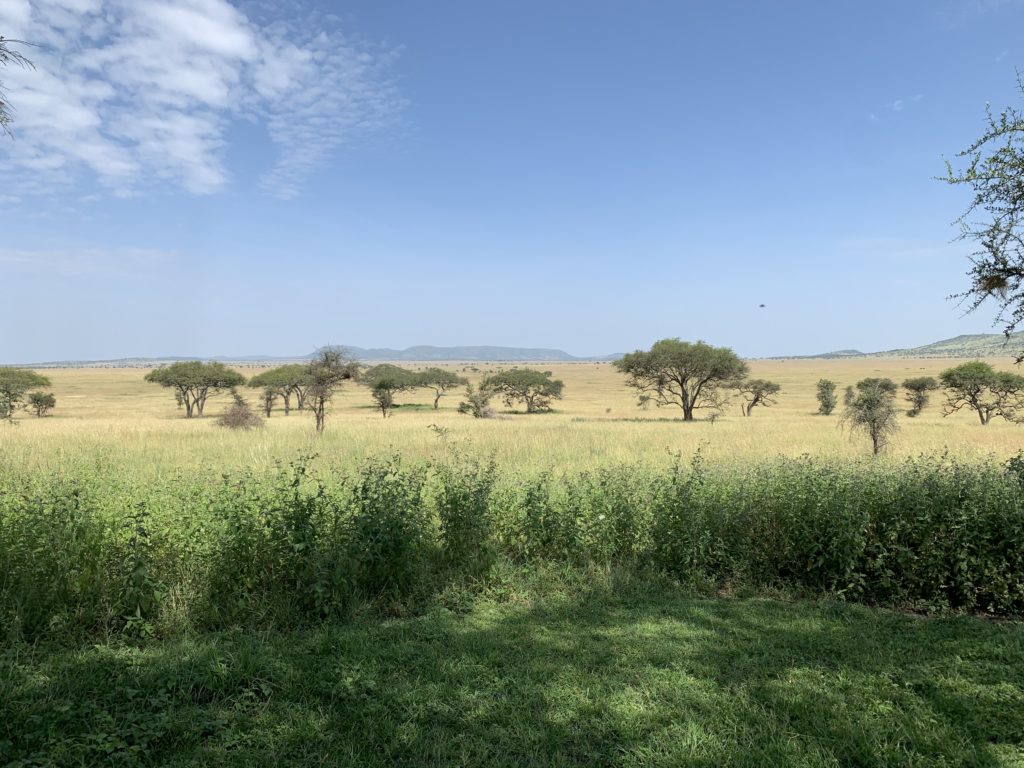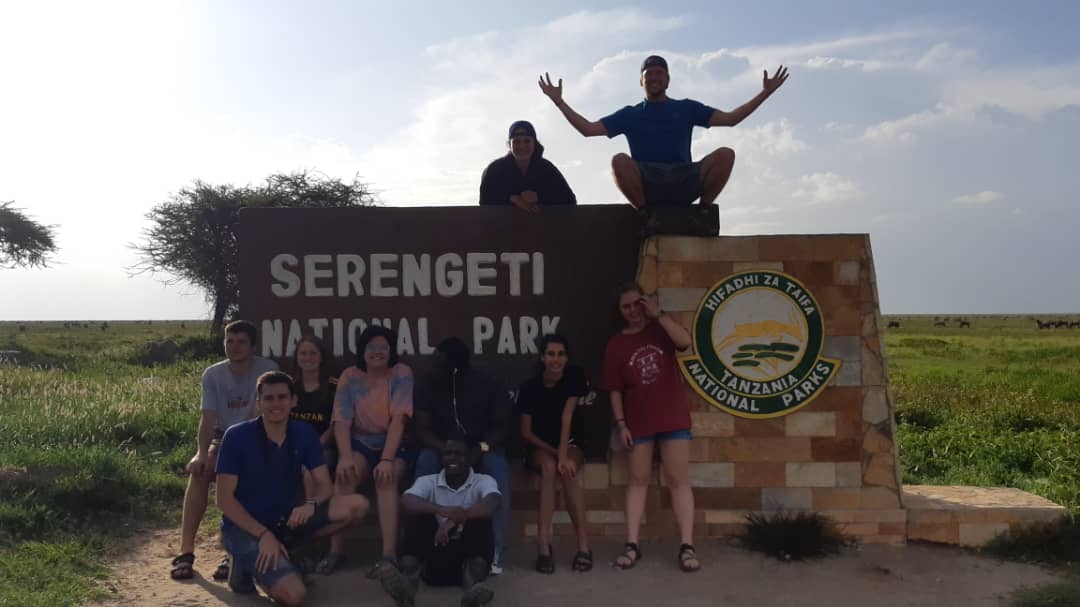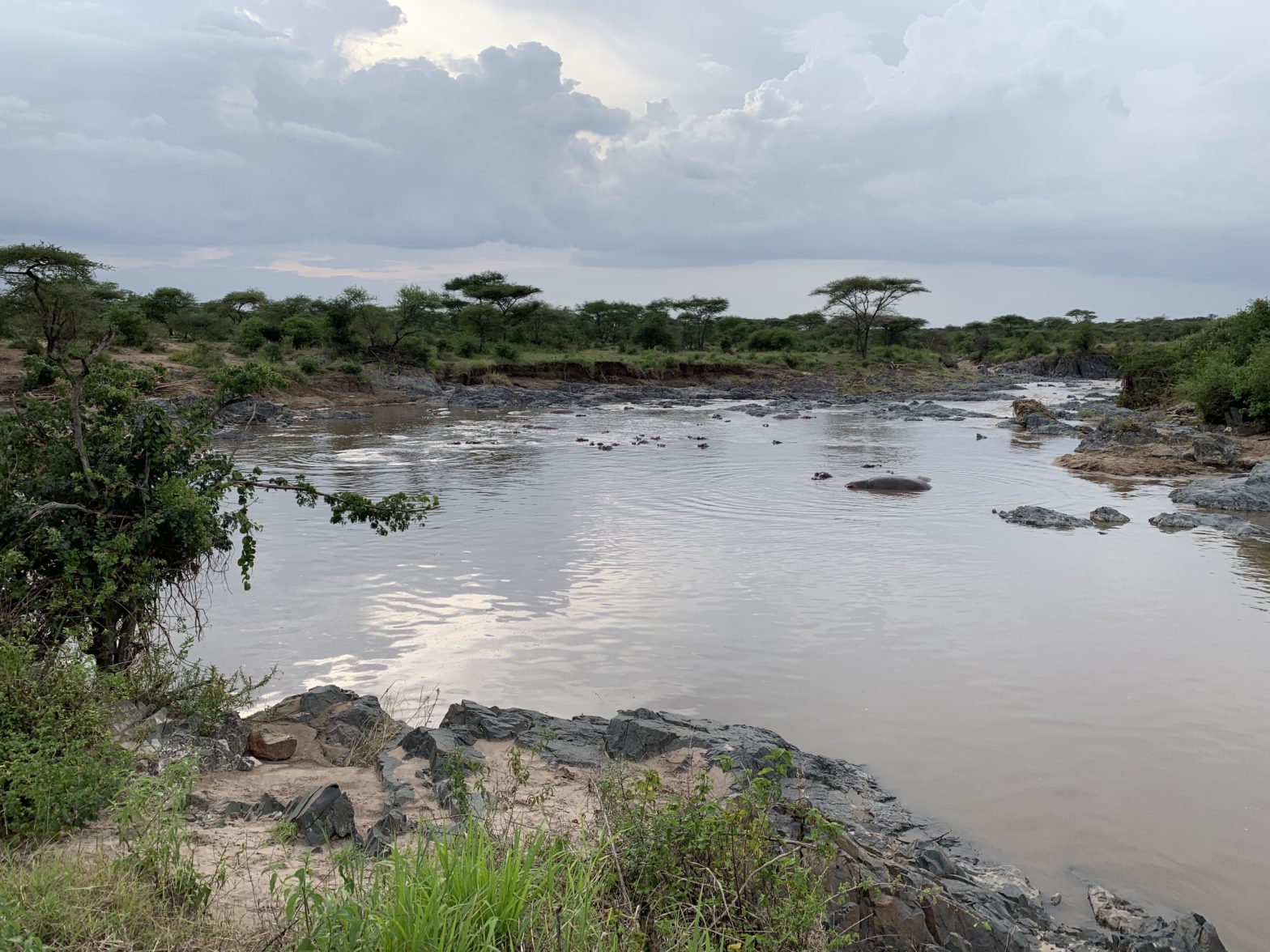
Following a week of intensive Swahili instruction, our quest for the big five brought us to none other than Serengeti National Park! You probably recognize the name Serengeti, and with good reason as it is one of the most famous national parks in the world. The Serengeti contains the largest intact mammal migration in the world with a mobile heard of wildebeest, zebras, and gazelles numbering 2.2 million. Boasting an impressive 30,000 km2, the park is also home to the largest concentration of predators both large and small, including everything from lions down to the serval cat. It is home to over 500 species of birds, both permanent residents and migratory, and its unique geological history has ensured a variety of ecosystems. It spans from the famous grasslands (pictured above) to woodlands and small hill ecosystems throughout. I promised national geographic level pictures and I am here to deliver (be warned of the massive impending picture/video dump).
This video above showcases our initial ride into the Serengeti. Along the way, we saw an estimated 500,000 wildebeest, zebra, and gazelle. The clip offers only a small glimpse into what we saw for at least a half hour of our drive; nothing but black dots peppering the horizon for as far as the eye could see. It was evening by the time we got to our camp at the heart of the park. I didn’t manage to snap a picture of our camp this time, but much like in Randilen, it was full-blown tent camping. We often went to sleep to the sound of lions patrolling the perimeter of our site. Seeing hyenas between you and the bathroom at night was not an uncommon site; just don’t show fear and you’ll be fine.
We were to stay in the Serengeti National Park for only three nights, and so the following morning we wasted no time piling in the land rovers and getting to work. Similar to when we were in Randilen, our goal was to conduct perpendicular road counts of all mammals spotted in four different ecosystems of focus, riverland, grassland, woodland, and disturbed habitat. The question of our research would be to determine whether certain species are more apt to be found in certain areas of the park over others. As an added bonus, we would also record animal behavior of every spotted herd/individual to assess species tendency. Now that our methodology was in place, all that was left was to set out and find some animals. In this regard, the Sergeant did not disappoint.






Perpendicular road counts over the two days of recording yielded ten unique mammal species including Topi, Olive Baboon, Vervet Monkey, Hippo, Impala, Buffalo, Elephant, Dik Dik, Water Buck, and Giraffe. Off the record sitings (meaning species spotted outside the realm of our research) included Cheetah, Leopard, Grant’s Gazelle, Thompson’s Gazelle, Wildebeest, Hyena, Serval Cat, Jackal, Hartebeest, many species of birds including Flamingos and Crowned Cranes, and the king of the jungle (Lion). Most often these “off the record” species were spotted on our evening game drive where the predators were more apt to move. One of these evenings, in particular, we were taken to a massive watering hole. At first, we were all confused why our guides had taken us to such a place. At first glance the pool was empty, but then the rocks started making sounds (see below).
Analysis of data yielded mix results for both groups based on a number of different factors, but it was found that certain species of mammals do prefer certain habitats within the Serengeti. For example, our group found Elephants residing exclusively within the grassland habitat while species like the Giraffe and Dik Dik preferred the resources of the woodland. All in all, the Serengeti was very good to us yielding three more of the legendary Big Five; those being the Lion, the Buffalo, and the Leopard. That leaves only one more species to go. So, with the elusive Black Rhino in our sites, we set a course for Ngorongoro!
Enjoy some extra videos of the wildlife below!
- 3087731852346,37.69122681476541 ↩


